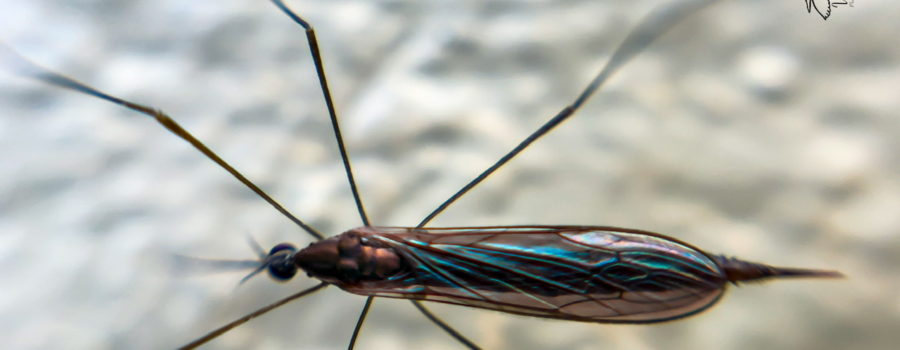Ferruginous Tiger Crane Flies are Harmless and Great for the Environment

Well, tonight’s buzzy, stingy, biting insect is actually none of those. Have you ever had a “giant mosquito” fly into you house at night and buzz around your lamps or drive your cats crazy? Well, guess what? It’s not really a mosquito at all, it’s a crane fly! Some people also call them mosquito hawks or daddy longlegs, for obvious reasons. Crane flies are related to other flies including stable flies, house flies, and long legged flies. There are approximately 15,000 different species of crane flies in the world, and they are found on every continent except Antarctica. Most of them live in Europe and Asia, with only about 15% of them living in the New World. The one we are going to feature tonight is the ferruginous tiger crane fly (Nephrotoma ferruginea) which is one of the New World species.
The ferruginous Tiger crane fly actually has a very large range that includes most of southern Canada and the United States. It’s especially common in the eastern half of North America. It’s also found in Mexico, Central America, and northern South America, as well as much of Europe and in some parts of Asia. It’s very common here in Florida from early spring until late fall, with multiple generations occurring each season. Most crane flies, including these guys, like moist areas with relatively high humidity, which means that they LOVE Florida. I have seen them many, many times over the years while walking in the woods, sitting outside, and flying around my porch lights on any given summer evening. This particular fly was one that I found on the walls of our kennels one morning at work. I’m sure it was attracted to the white walls like so many other nocturnal insects I see out there.

Like so many people, when we first moved here and for many years after that, I thought that these insects were large mosquitos, and it took me awhile to figure out that they didn’t seem to be attracted to people and didn’t seem to bite like most mosquitoes. Of course, I’ve since learned that they are actually flies and that not only are they nonvenomous, but indeed, they don’t even bite (or sting. This was a female and the thing that looks like a stinger is actually her ovipositor). In fact, the adults only live for a few days, and do not eat at all during that time. Their sole purpose is to find a mate and reproduce. The larvae look very different from the adults (they look like small caterpillars), and aren’t often seen by the casual observer since they live in wet leaves, under logs, or sometimes on or around mats of algae. Along with many other organisms, the larvae eat and digest decaying vegetable matter, helping to recycle the nutrients back into the soil. There are a few species that also feed on plant roots, sometimes those of crops or vegetables, but fortunately the ferruginous Tiger crane fly is not one of those.
As you can see, these flies are actually very good for our environment. They help to break down decaying material, don’t harm plants, don’t bite, have no poisons, and actually pretty much ignore people and all of our activities. So the next time one of these flies manages to sneak into your house or is flying around your windows or lights at night, either just ignore it (we’ve already seen that it ignores us) or shoo it back outside so that it can continue it’s hunt for the opposite sex.

If you like beautiful nature photographs and nature inspired artwork along with informative and entertaining nature and animal related content then you’ll enjoy this blog. Sign up below and we will deliver each episode directly to you.





Recent Comments